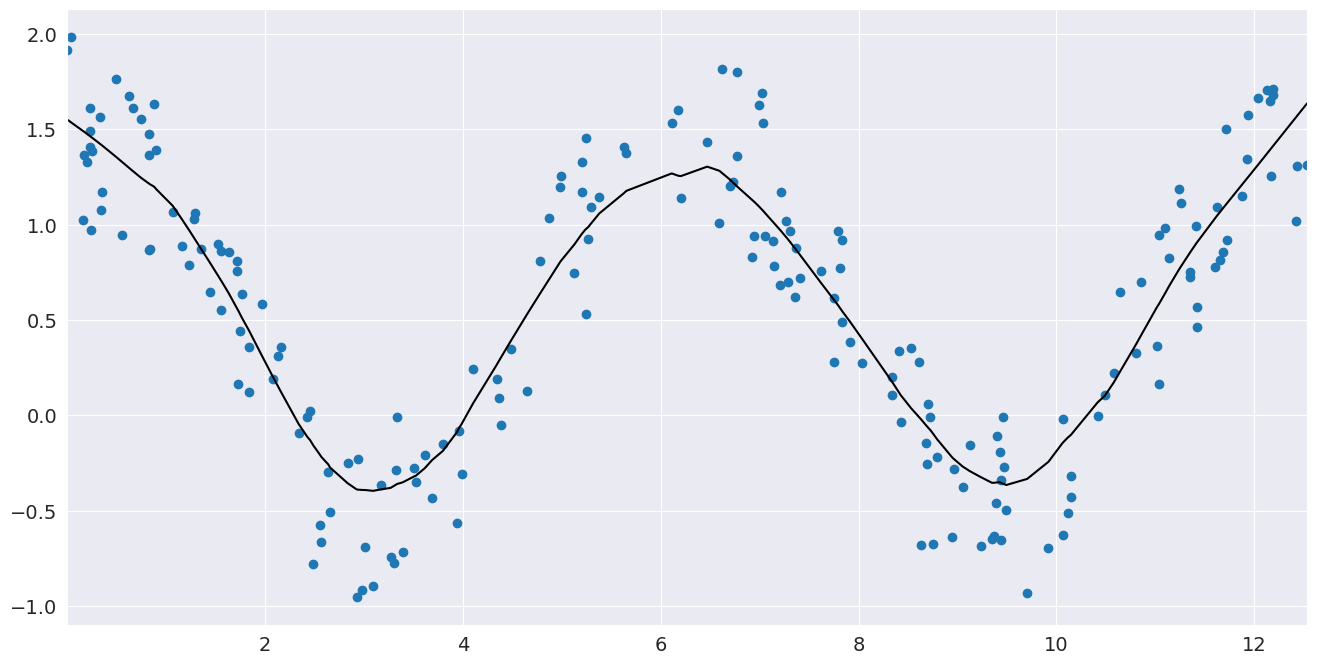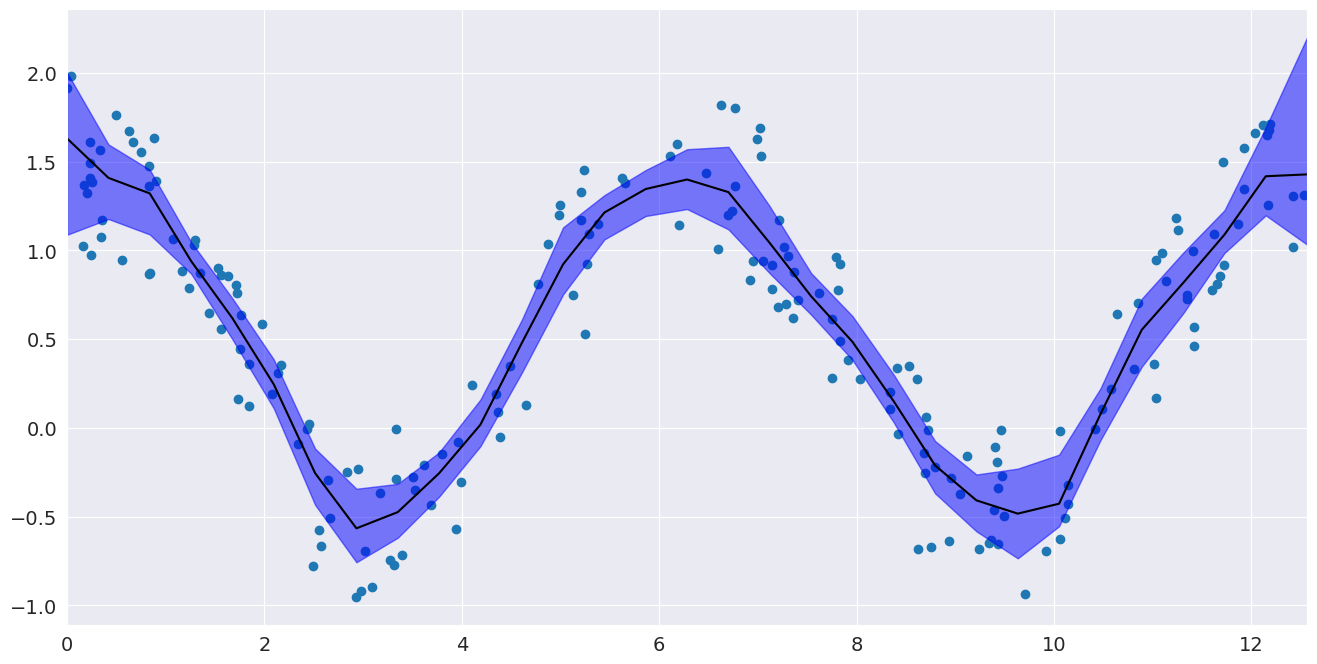LOWESS Smoother¶
This notebook introduces the LOWESS smoother in the nonparametric package. LOWESS performs weighted local linear fits.
We generated some non-linear data and perform a LOWESS fit, then compute a 95% confidence interval around the LOWESS fit by performing bootstrap resampling.
[1]:
import numpy as np
import pylab
import seaborn as sns
import statsmodels.api as sm
sns.set_style("darkgrid")
pylab.rc("figure", figsize=(16, 8))
pylab.rc("font", size=14)
[2]:
# Seed for consistency
np.random.seed(1)
[3]:
# Generate data looking like cosine
x = np.random.uniform(0, 4 * np.pi, size=200)
y = np.cos(x) + np.random.random(size=len(x))
# Compute a lowess smoothing of the data
smoothed = sm.nonparametric.lowess(exog=x, endog=y, frac=0.2)
[4]:
# Plot the fit line
fig, ax = pylab.subplots()
ax.scatter(x, y)
ax.plot(smoothed[:, 0], smoothed[:, 1], c="k")
pylab.autoscale(enable=True, axis="x", tight=True)

Confidence interval¶
Now that we have performed a fit, we may want to know how precise it is. Bootstrap resampling gives one way of estimating confidence intervals around a LOWESS fit by recomputing the LOWESS fit for a large number of random resamplings from our data.
[5]:
# Now create a bootstrap confidence interval around the a LOWESS fit
def lowess_with_confidence_bounds(
x, y, eval_x, N=200, conf_interval=0.95, lowess_kw=None
):
"""
Perform Lowess regression and determine a confidence interval by bootstrap resampling
"""
# Lowess smoothing
smoothed = sm.nonparametric.lowess(exog=x, endog=y, xvals=eval_x, **lowess_kw)
# Perform bootstrap resamplings of the data
# and evaluate the smoothing at a fixed set of points
smoothed_values = np.empty((N, len(eval_x)))
for i in range(N):
sample = np.random.choice(len(x), len(x), replace=True)
sampled_x = x[sample]
sampled_y = y[sample]
smoothed_values[i] = sm.nonparametric.lowess(
exog=sampled_x, endog=sampled_y, xvals=eval_x, **lowess_kw
)
# Get the confidence interval
sorted_values = np.sort(smoothed_values, axis=0)
bound = int(N * (1 - conf_interval) / 2)
bottom = sorted_values[bound - 1]
top = sorted_values[-bound]
return smoothed, bottom, top
# Compute the 95% confidence interval
eval_x = np.linspace(0, 4 * np.pi, 31)
smoothed, bottom, top = lowess_with_confidence_bounds(
x, y, eval_x, lowess_kw={"frac": 0.1}
)
[6]:
# Plot the confidence interval and fit
fig, ax = pylab.subplots()
ax.scatter(x, y)
ax.plot(eval_x, smoothed, c="k")
ax.fill_between(eval_x, bottom, top, alpha=0.5, color="b")
pylab.autoscale(enable=True, axis="x", tight=True)
